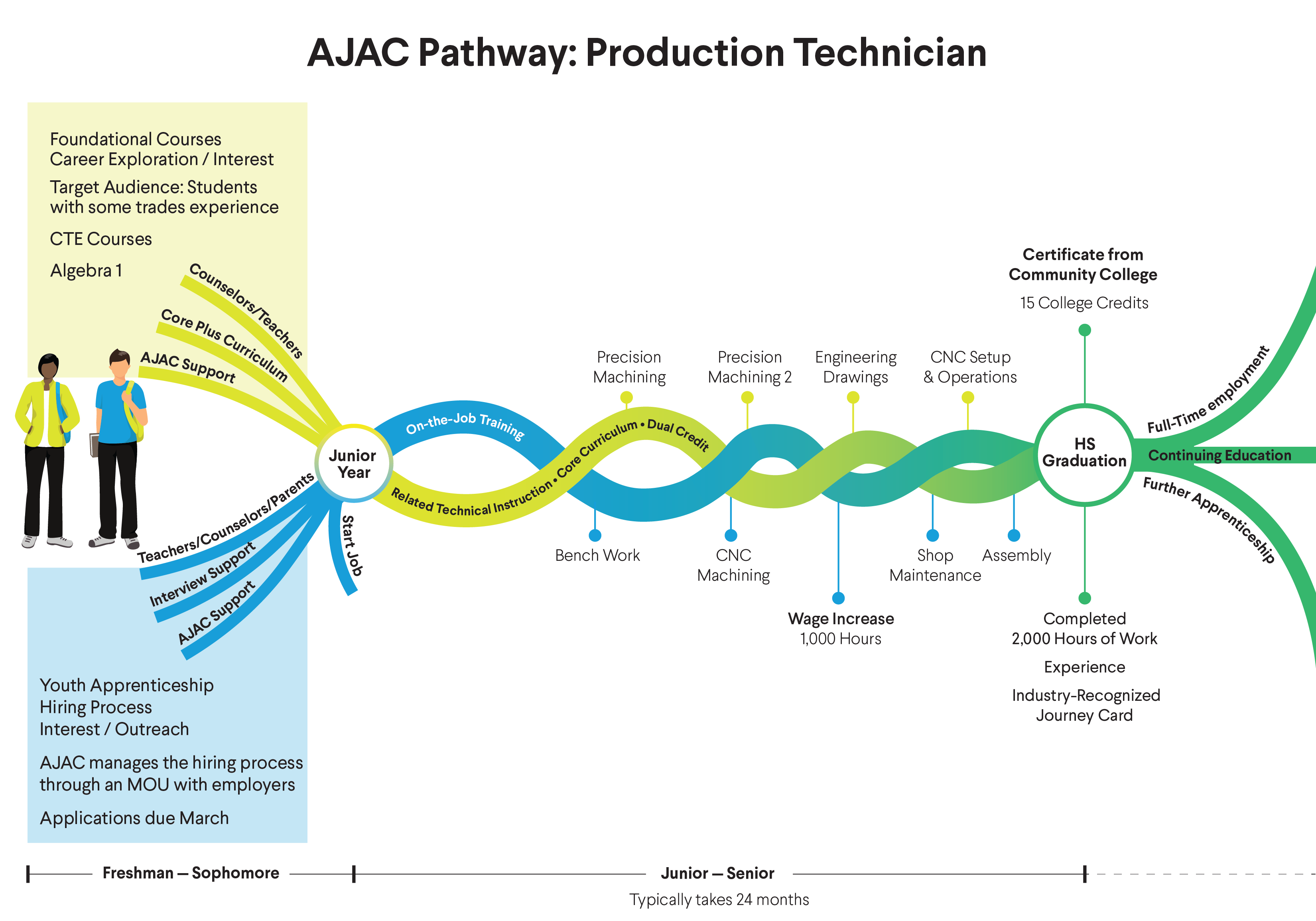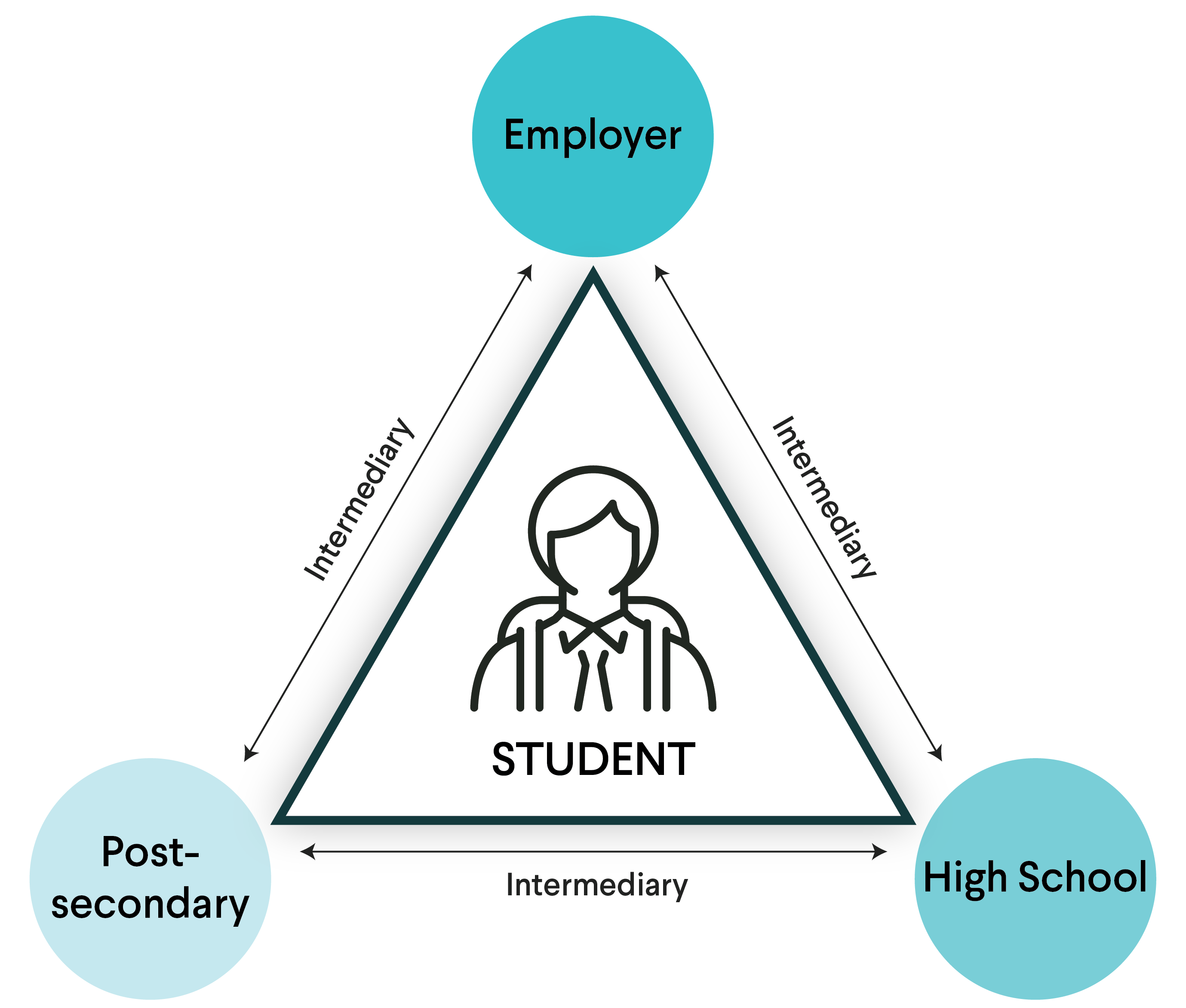A recent Jobs for the Future (JFF) analysis of federal apprenticeship data showed a 113% increase in the number of 16-to-24-year-olds joining a Registered Apprenticeship program from 2010 to 2020. (See chart above.) More than 40,000 young people joined an RA program in 2020.
While the analysis only covered Registered Apprenticeship programs with 16-to-24-year-old participants, not specifically youth apprenticeship programs (those explicitly designed for young people), it paints an important picture of the state of apprenticeship for young people.
There are several bright spots: The number of young people between ages 16 and 24 participating in apprenticeship grew dramatically from 2010 to 2020 and at a much higher rate than overall youth employment. Moreover, the average exit wage of $30 per hour for young people completing apprenticeships is much higher than the median wages among all young people, attesting to the power of work-based learning to move people into well-paid jobs. And while STEM apprenticeships still represent a small proportion of apprenticeship programs, participation in those programs did show substantial growth over the decade, reflecting an emerging national focus on building alternative youth pathways into careers in science, technology, engineering, and math.
Despite these gains, apprenticeship participation rates and outcomes for people of color and women of all backgrounds lag behind those of their white and male apprentices. The percentages of women and Black apprentices did not budge significantly between 2010 and 2020, despite the dramatic growth in overall participation. And the occupational segregation seen most dramatically when comparing male and female apprentices (and, to a lesser degree, when comparing Black apprentices to white apprentices) has resulted in significant differences in earnings and advancement opportunities.
To support programs in implementing practices that promote diversity, equity, inclusion, and accessibility (DEIA) in apprenticeship, JFF has created a program design framework for employers and Registered Apprenticeship sponsors. This program has field-informed program design elements and considerations for building systems, processes, partnerships, and practices that can drive DEIA in their programs, providing access and support to youth apprentices of all backgrounds.









